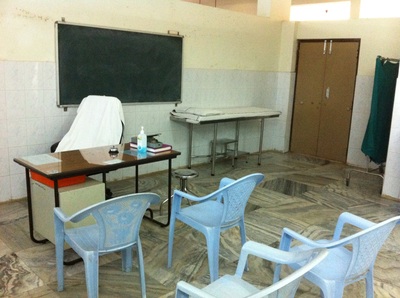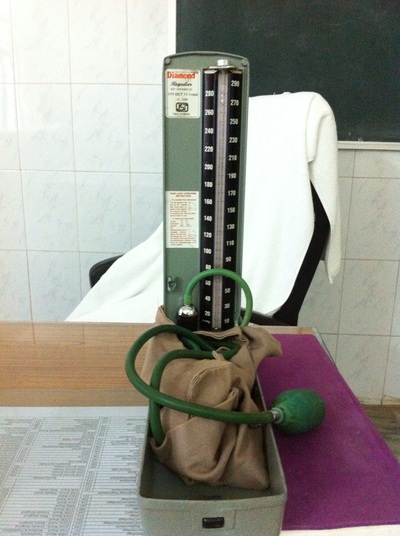What I was hoping to see in the dermatology clinic was a case of leprosy, the clinic sees several cases each week. The dermatologist was telling me the cases have increased to roughly 50 cases per 10,000 people which is a significant amount. The reason for the surge is several years ago Indian declared that leprosy was eradicated in the country, only 1 case per 10,000 people. What happened then was suppliers, such as aid organizations and pharmaceutical companies, quit providing the medication to treat leprosy. If leprosy was supposedly gone there was no need to keep spending money on distributing the medication. That would have been the ideal situation but that was not the case. So now several years later you are seeing a spike because people who were infected didn't have treatment options available allowing the disease cycle to continue.
We also talked about government programs to ensure tuberculosis and HIV get treated. There are programs to provide the medications free for both diseases and the tuberculosis treatment is even observed improving the compliance rate. This has decreased the incidence of TB significantly and decreased drug resistance cases. There still a few cases each month of extensively drug-resistant tuberculosis (XDR-TB). Those cases require hospitalization to ensure the patient receives adequate treatment. In regards to HIV, there is still great stigma attached to the diagnosis. Employers fire people with the diagnosis, families excommunicate the individuals, and they are socially ostracized. This has lead to a dangerous environment for hospital employees and other patients. It is not uncommon for HIV positive patients to be admitted to the hospital and not disclose their positive status perhaps due to social pressures. This becomes very dangerous in a setting where medical supplies are often sterilized and reused. What is the ethical action to take? You have the patient's right to determine what tests they undergo on one side and on the other side you have the patients and staff who could potentially be exposed. This seems to be a tough decision.
Below are pictures of the typical outpatient clinic. The attending sits at the desk with the patient who is currently being seen sitting on the silver stool. Additional patients waiting to be seen are first checked in then sit in the blue plastic chairs to wait their turn. Most patients admitted to the hospital are admitted through the outpatient clinic. The outpatient clinics here function similar to an Urgent Care Clinic in the US.


 RSS Feed
RSS Feed
